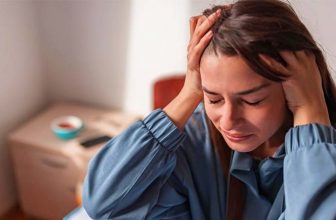
Your body must expel the waste products and damaged cells produced during your workout to rejuvenate the muscles and tissue by replacing them with new cells.
While the process does happen naturally, taking additional measures to aid recovery helps optimize it especially when you’re working out with greater intensity or increased frequency. Want to recover quicker? Then follow on for Faster Workout Recovery: 9 Irrefutable Tips!
1. Sleep
Experts consider sleeping an essential part of the recovery process. The body generates roughly 95% of growth hormones needed to build and repair cells, making sleep a primary factor in muscle recovery.
It helps ease muscle tension, strain, and aches. Studies also show that sleeping is a crucial element in helping your body avoid injuries. A CBD vape can help to combat stress and aid restful sleep. The findings suggest that you are nearly three times likely to sustain an injury when working if you get less than 5 hours of sleep.
That probability reduces to almost one and half times if you sleep for roughly 6 to 7 hours. Check out Matthew Walker’s book “Why We Sleep” to discover the benefits of getting 8 hours of sleep per night.
2. Training Plan
Your strategy to aid muscle recovery is bound to give faster results the better your plan. It would help if you considered enough rest days between your training schedule, because overtraining your body without making room for rest and rejuvenation, limits its ability to grow stronger muscles. And it also undermines your efforts towards achieving fast muscle recovery after exercising. Check out this book on squat training if you’d like to make swift progress in your fitness.
As you plan, take note of your workouts to avoid doing the same thing throughout the week, even if you accommodate enough rest days. A decent amount of variety is best.
Experts recommend targeting different muscle groups and doing various cardiovascular exercises. It also helps to include “active recuperation” (e.g. stretching) that helps you remove stress while recovering – you keep gently moving by doing less intense or strenuous exercises. It’s a great morale booster too!
3. Protein Intake
The breakdown and resynthesis of your muscle protein are higher when exercising. Hence, you must replenish the dwindling supply to ensure your muscle cells have enough amino acids essential for repairing and generating new muscle cells.
People have different protein levels depending on their body weight and training intensity. Individuals who exercise regularly can maintain the recommended (optimal) protein intake through their diet by including some protein in every meal, targeting roughly 20g of protein.
4. Water
The body needs water to maintain its metabolic functions. Besides nutrient transfer, you must also consider fluid replacement, topping up what you’ve lost when sweating as you exercise. Including electrolytes in your drink can be helpful for optimum rehydration.
5. Calories
The body’s ability to maintain proper muscle growth and repair is hampered when you have a lower calorie intake. It causes the body to struggle when working out, slowing down the recovery process. This can improve quite quickly however when you review your diet to address this calorie deficit.
You can achieve this more effectively when you’re consciously aware about your food choices and consume more than you burn. It will keep your body’s energy levels up, ensuring it has enough when training as well as during the recovery phase.
6. Antioxidants & Omega-3 Fats
Your body will absorb a rich supply of antioxidants when you include fruits, vegetables, nuts, and whole grains in your diet. They help reduce the oxidative stress your body experiences when working out.
A regular intake of omega-3 fats helps limit joint and muscle inflammation, meaning you will benefit more when you include oily fish, nuts, and seeds like chia, flaxseeds, and walnuts in your meals (at least twice a week) especially if you have an intense workout schedule.
7. Carbohydrates
Your muscle’s glycogen reserves are used up when you exercise, and you can replenish this glycogen by eating complex carbohydrates when you are resting.
Experts recommend increasing your intake of complex carbs if you workout for an extended period. A glass of yogurt or milk and a banana (banana milkshake) is an excellent post-workout snack because it is rich in protein, electrolytes, carbohydrates, and fluid.
8. Massage
After demanding physical activity, a massage can help ease muscle strain and tension, reducing discomfort attributed to delayed soreness (DOMS).
Massaging the muscles also helps improve blood circulation and nutrient transfer to the damaged cells. It can help retain muscle elasticity and speed up muscle repair and rejuvenation, especially for athletes. The psychological boost is also of significant benefit.
9. Stretching
Lastly, professional athletes and bodybuilders know the significance of stretching before and after a workout. It helps lower the chances of muscle tension and cramps associated with repeated contraction and relaxation.
Take around 5-10 minutes to stretch before starting your training to ensure your joints and muscles move dynamically to reduce the risk of injury and strain. Doing the same after working out facilitates faster recovery as well.
Do you recover quickly after training? Which hacks help you avoid DOMS or muscle soreness? Let us know below, and join in the conversation on Facebook, Twitter & Instagram!









